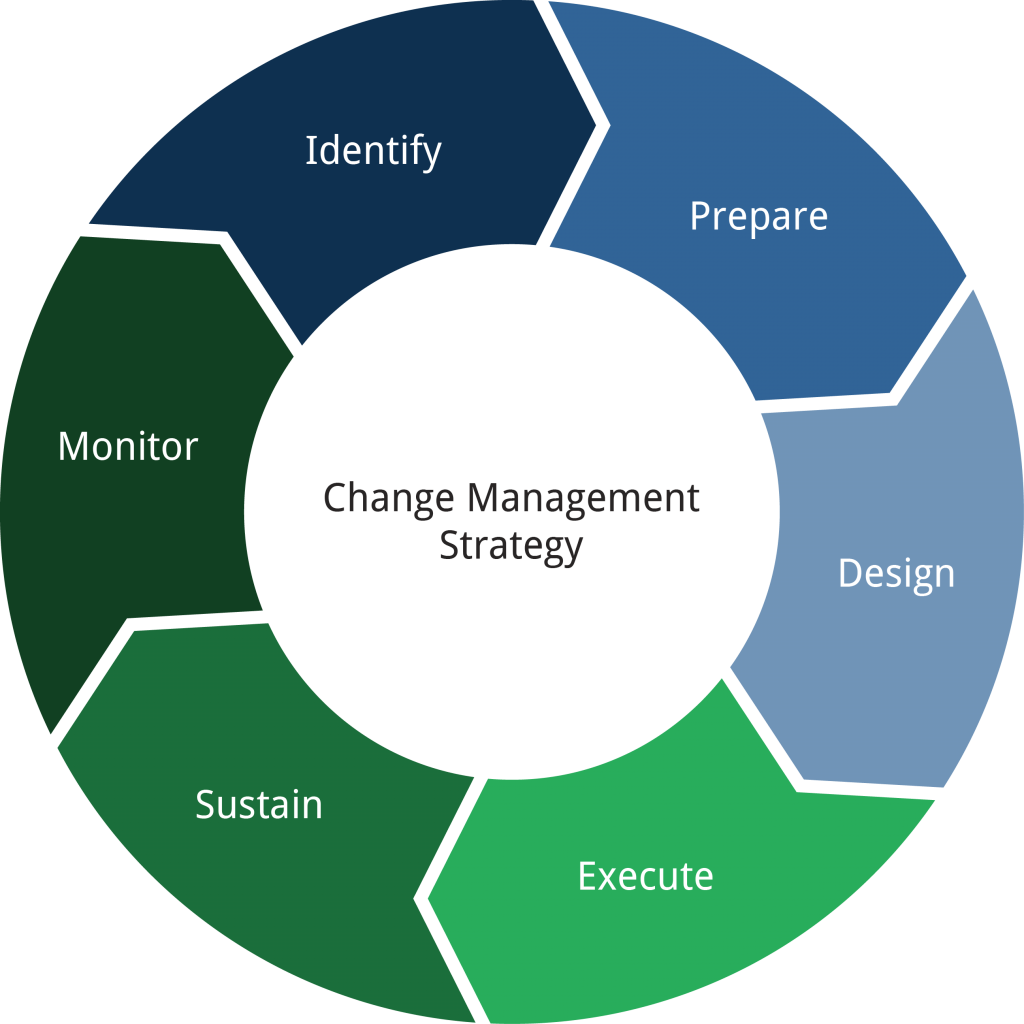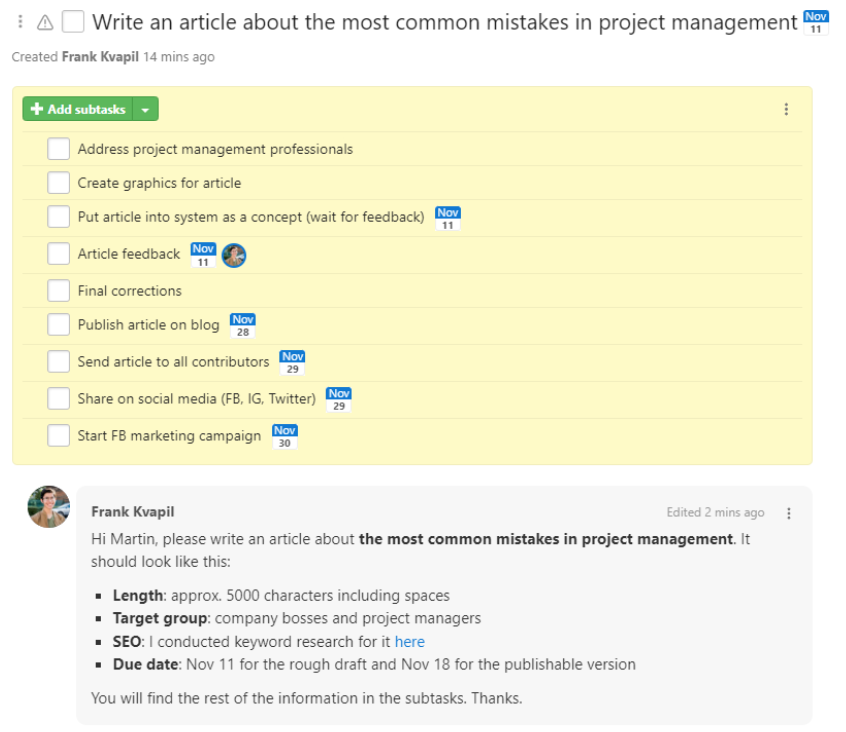Content
- 1. A Busy Project Manager Who Lacks Empathy
- 2. The Absence of the Correct Project Management Tool
- 3. Chaotic Incorporation of Project Management Software
- 4. A Badly Planned Project Budget
- 5. Unclear Assignment and Delegation of Tasks
- „If You Want Something Done Well, Do It Yourself“
- 7. Badly Set Team Communication
- 8. Confused Roles and Competencies in Projects
- 9. (In)ability to Finish Project on Time
- 10. Neglected Project Closure: No Evaluation, No Thank You and No Celebration

The Most Common Mistakes in Project Management and How to Avoid Them
 Freelo team
Freelo team

Content
- 1. A Busy Project Manager Who Lacks Empathy
- 2. The Absence of the Correct Project Management Tool
- 3. Chaotic Incorporation of Project Management Software
- 4. A Badly Planned Project Budget
- 5. Unclear Assignment and Delegation of Tasks
- „If You Want Something Done Well, Do It Yourself“
- 7. Badly Set Team Communication
- 8. Confused Roles and Competencies in Projects
- 9. (In)ability to Finish Project on Time
- 10. Neglected Project Closure: No Evaluation, No Thank You and No Celebration
People always learn from their mistakes. But you don’t have to – not when it comes to project management. We have compiled the most common mistakes that often cause entire projects to shipwreck. As it happens, on average, 21% of projects that don’t have well-established project processes fail. And you don’t want to be part of that statistic… 🙅🏻♂️
1. A Busy Project Manager Who Lacks Empathy
More than half of project managers tend to work on two to five projects at once, and 15% of managers maneuver even more than 10 projects at a time. But that’s not really as important as the question of how demanding the projects are and whether they have the capacity to handle them. We’ve all been there – procrastinating on tasks and avoiding emails.

Nevertheless, when a project manager gets caught up in it all, it can drag the whole project. One task builds on another, the manager gets buried under the work and is nowhere to be found, and you can’t continue with your assignments.
And now, on to the second pivotal characteristic in top project managers – empathy and soft skills. A manager whose main goal is to get the job done and is not interested in the well-being of their employees is not really in demand anymore. When a leader does not care about their employees, the team’s motivation plummets.
How to avoid this? By starting with the boss’s perspective – choose the correct project manager carefully. Do they fit snuggly into the team? Will they have enough time for your project? Continuing with the project manager’s perspective – contemplate whether or not you’re able to invest enough energy into the project. Could an assistant help you out with some matters? Do you delegate your work correctly?
2. The Absence of the Correct Project Management Tool
An Excel file full of colors, comments, numbered questions, and answers – that could be a very quick encyclopedic example of chaotic project management. Regardless, only 1 in 4 organizations use appropriate software for project management. But once your team makes that big step, you won’t know how you used to live without it.
 A reference from the global consulting group Mazars. Check out the full case study.
A reference from the global consulting group Mazars. Check out the full case study.
How to avoid this? Here is a truly simple solution – incorporate a project management tool into your company, which will save you time, money, and hold your nerve.
3. Chaotic Incorporation of Project Management Software
The human brain does not like change, so it innately resists it to some degree. That is why introducing a work organization application to the whole team can be a bit of a pain, even more so if management does it in a haphazard, chaotic rush. Are you making these mistakes as a boss?
- Not explaining why the change is occurring and how it will help.
- Not showing the team members how the tool works (e.g., through webinars or training).
- Not setting an example by using the chosen software yourself daily.
- Choosing an overly complicated software, which only suits you and not others.
How to avoid this? Inform and communicate. Give your team clear reasons as to why the change is happening and how it will benefit the whole company, but mainly them.

4. A Badly Planned Project Budget
Here are a couple of numbers to begin with:
- Only 43% of companies end their projects within their set budget.
- When a project fails to reach its goals, a whole third of the budget is lost.
A large number of companies do not keep track of the budget at all. It’s true that when you don’t have a budget, you can never exceed it. But do you really have unlimited resources, and does the amount of spent money not matter?
How to avoid this? Create a realistic budget in accordance with the current economic situation of the market. Use a project management app for a full overview of the costs incurred and to compare the plan with reality.
5. Unclear Assignment and Delegation of Tasks
Of course, why not – assign it to a colleague. But the right way!
Tasks shouldn’t be too vague, but they shouldn’t consist of a bunch of unnecessary subtasks either. Consider if it’s realistic for a colleague to solve the given tasks on time. Because what is a great employee worth if all his juices have been drained.

The most important thing is correctly assigning tasks.
“Before we introduced Freelo into our company, we sometimes had an email get misinterpreted because it was sent to multiple people on the team and everyone thought someone else would deal with the task. By assigning tasks to a specific person in Freelo, this practically never happens.„
Jakub Kofron, Founder, Beneficio (full case study)
The easiest thing would be to show you:
An example of bad task assignment

What happens when Frank assigns a task this disorderly?
- Martin has to read the message at least twice to understand what Frank is asking for.
- He himself (ideally in a task planning tool) will have to write down each subtask and waste a lot of time doing so.
- He will have further questions (how long of an article, what kind of graphics, etc.) and send Frank further unnecessary messages.
- It is quite likely that Martin will forget something.
An example of correct task assignment

The task assignment should include:
- A solver
- The main assignment (the expected outcome and further details)
- Subtasks
- Deadline
How to avoid this? Assign tasks transparently and ask yourself: “If I were to work on this task myself, would I be able to do it on time?”. Have realistic expectations about deadlines and the scope of tasks. Do not inconsiderately throw tasks at colleagues. Think about the structure of the task as well – Would it be a good idea to divide it into subtasks? To keep track of completed tasks use the Gantt chart or project management software.
„If You Want Something Done Well, Do It Yourself“
You know the saying. A common problem for leaders and project managers is delegating work to others, since they believe that they do it best and don’t enjoy entrusting it to someone else.
Why delegating work is great:
- You get more time for more important matters (company management, business and strategic activities, or company growth).
- You demonstrate trust to your employees (the feelings that correspond to the company family and that attribute to the growth of the company).
- You will not get burned out and push yourself to the edge (even the most dedicated boss or project manager can’t work well under long-term stress).
How to avoid this? Don’t just give the employee a task, but all the responsibility that comes with it. Trust in them. Even if it’s tough, remember that thanks to delegating work you can focus your attention on more important things.
7. Badly Set Team Communication
First of all, how will you communicate in the team? What channels will you use?
Second of all, how often will you hold meetings and what method of meeting will you choose?
It sounds so easy – just communicate. In reality, it’s a common setback in companies. Badly set communication can cause chaos, unnecessary delays, and the postponing of other work.

How to avoid this? Define the medium that you’ll use to assign work and communicate. We use Freelo for project management and asynchronous communication. On the other hand, Slack is a great tool for instant or synchronous communication. You should also keep a set of clear rules. We recommend regular sprints and 1-to-1 team retrospects.
8. Confused Roles and Competencies in Projects
Who is my superior and who am I in charge of myself? These questions should be clarified before the initialization of every project. Every member of the team should know to whom they should turn in their work, with whom they should consult, and from whom it is important to get feedback. A problem can arise if there are numerous people in charge. In that case, each supervisor should have and take care of their own department, and the employees should know which individual they should turn to.
How to steer clear of this? Clearly divide rolls within the team at the start of project planning. Everyone needs to know what they are responsible for and who to consult. Create competency models for each job in the team so that it’s clear what the distribution of work is for each member. Let’s take Dori for example, a tech support representative at Freelo:
Competency model: Dorota Cikanova, tech support representative at Freelo
- Main activities
-
-
- Telephone, chat, and email support: 40% of the time
- Testing new functions and bugs: 10% of the time
- Social media management: 20% of the time
- Active calling: 10% of the time
- User accounts management + accounting document preparation: 5% of time
- Online consultations: 3% of the time
- Webinars: 3% of the time
-
- Secondary activities
-
-
- Adding posts to help, preparing templates: 5% of the time
- Editing podcasts: 2% of the time
- Finding new crew member: 2% of the time
-
- Representativeness
-
-
- Káťa, support captain
- Terka, support representative
-
- Direct subordinates
-
-
- None
-
- Direct supervisors
-
-
- Vlada, marketing captain
- Honza, Freelo captain
- Karlos, Freelo captain
- Borki, Freelo captain
-
- KPI (Key Performance Indicators)
-
-
- Number of new paying users
- Number of churns
- Number of followers/likes on social networks
-
- Reporting
-
-
- She summarizes what she worked on each day on Slack.
- She makes a sprint that summarizes the previous week’s work every Monday.
- She leads a webinar every third Wednesday.
-
9. (In)ability to Finish Project on Time
It’s not always worthwhile to see a project through to the end at any cost. The hardest part is the moment of admitting that it’s no longer working.
“Sometimes it’s difficult to convince the management that it’s best to stop the project at this moment if they are stubbornly clinging to its completion, even though everyone in the team knows that the project has lost its meaning,” says Jiri Kratky – lecturer, project manager, and managing director of PM Consulting.
The infamous PepsiCo, which introduced the failed Crystal Pepsi project in the early 1990s, could also tell a tale. That fact the colorless drink didn’t taste like real Pepsi was pointed out to David Novak, then COO at PepsiCo, by the bottlers themselves. Within a year, Crystal Pepsi disappeared from the shelves due to low sales. But Novak progressed from the setback: “I learned there that you have to recognize that when people are bringing up issues, they might be right!”.

How to avoid this? It’s important to openly admit to yourself and the whole team that stopping work on the project is the best possible solution for the company to not lose any more wasted resources. Learn from the mistakes made during project management.
„Try to find out with your team what you learned on the project and what you could apply to future projects,“
advises Jiri Kratky – lector, project manager and director of PM Consulting.
10. Neglected Project Closure: No Evaluation, No Thank You and No Celebration
Hooray, you’ve successfully completed the project, handed over the approved deliverables, closed all the administrative necessities and… fast forward to the new project?! This is exactly the mistake you shouldn’t make in the project closure phase. After all, you’ve devoted your and your team’s time, effort, and energy on the project, so you can’t just move on.
How to avoid this? A successful project needs to be celebrated properly and all participants thanked.
„Even if you’re busy with new projects at the end of the project, it’s still good to stop, thank the team, and praise them for what they’ve done. It can do a lot to boost people’s motivation and it doesn’t actually cost anything, just a moment of time,“ says Jiri Kratky.

Final Tip
Learn from yourself. Did something go wrong with your project management? Did you not fit within the budget, slip off schedule, set ineffective rules for team communication? Always take the time to find out the cause and don’t repeat the mistake in your next project. In the end, failure is actually an advantage (except on second glance, admittedly) that moves you forward.
 Freelo team
Freelo team





